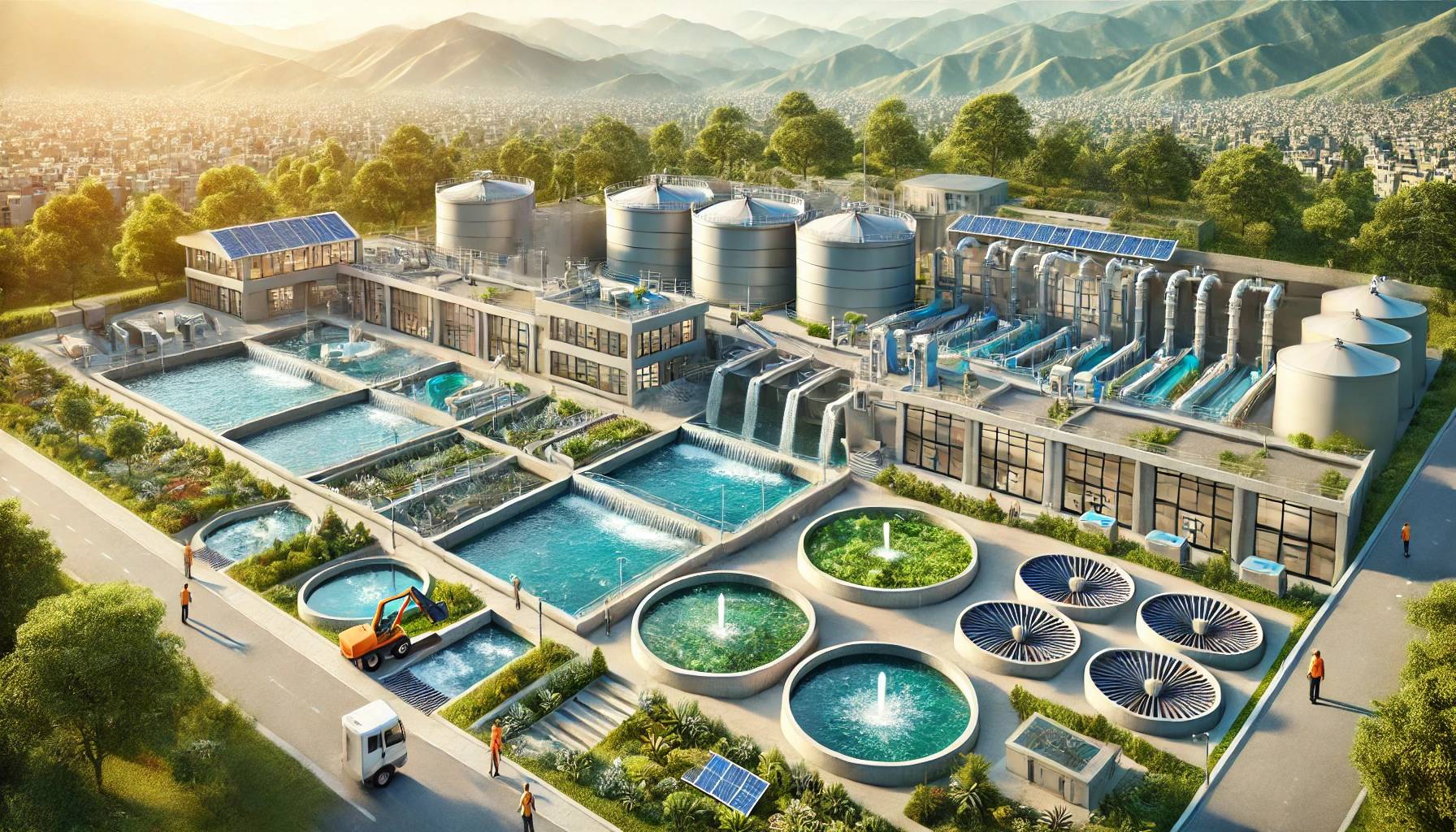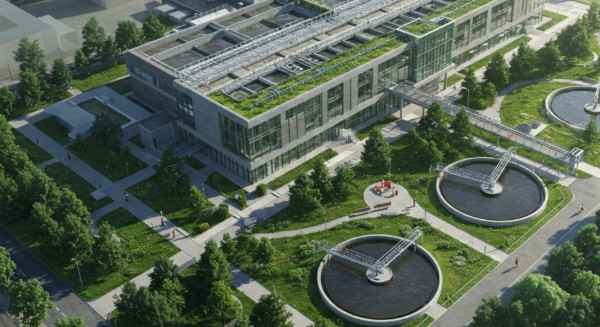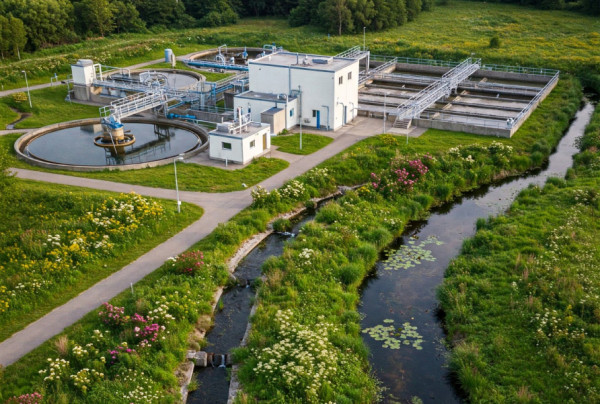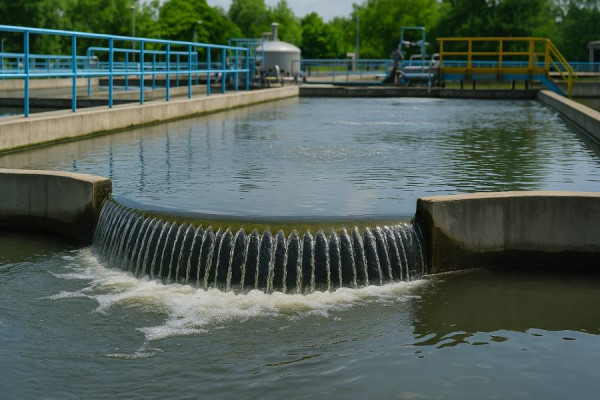News & Blogs
Innovative Wastewater Treatment Design in Nepal

Wastewater treatment design plays a crucial role in safeguarding public health and the environment, especially in a rapidly developing nation like Nepal. With urbanization accelerating at an unprecedented rate, it is essential to address the growing need for efficient wastewater treatment systems. In both urban and rural areas, designing wastewater treatment systems that meet the needs of a diverse population presents significant challenges. Rapid urbanization, infrastructure gaps, and evolving environmental regulations require innovative approaches to wastewater management in Nepal.
Key Components of Wastewater Treatment Design
-
Pre-Treatment: Screening and Grit Removal The first step in wastewater treatment is pre-treatment, which involves removing large debris and grit from the water. Screening is typically done using bar screens or mesh filters to capture larger objects, such as plastics, rags, and other debris. Grit removal is essential to prevent damage to downstream equipment and ensures that the wastewater treatment process proceeds smoothly.
-
Primary Treatment: Sedimentation Tanks and Clarifiers Primary treatment focuses on separating solids from wastewater through sedimentation. In this stage, wastewater is passed through large sedimentation tanks or clarifiers, allowing heavier particles to settle to the bottom while lighter materials remain at the surface to be removed. This step reduces the organic matter in the water, preparing it for more advanced treatment.
-
Secondary Treatment: Biological Processes Secondary treatment involves the use of biological processes to further remove organic pollutants from the water. Two of the most common methods are activated sludge systems and trickling filters. Activated sludge processes rely on aeration to promote the growth of bacteria that break down organic matter. Trickling filters utilize a bed of rocks or other media that support microbial growth, which treats the water as it passes over them. Additionally, Sequential Batch Reactors (SBR) are gaining popularity for their efficiency in treating varying wastewater loads.
-
Tertiary Treatment: Filtration and Disinfection Tertiary treatment is the final step in the wastewater treatment process. It focuses on removing remaining contaminants and pathogens to make the water safe for discharge or reuse. Filtration processes, such as sand or membrane filtration, are employed to remove fine particles. Disinfection methods, including chlorination or ultraviolet (UV) radiation, are used to eliminate any harmful microorganisms, ensuring the treated water is safe for the environment or for reuse in non-potable applications.
-
Sludge Management: Digestion, Dewatering, and Disposal/Reuse Sludge, the byproduct of wastewater treatment, must also be properly managed. After primary and secondary treatment, the accumulated sludge is treated through anaerobic digestion to reduce its volume and stabilize organic material. Dewatering methods, such as centrifugation or pressing, are then used to remove excess water. The treated sludge can be disposed of or reused as fertilizer or for energy production.
Design Considerations for Nepal
-
Local Factors: Monsoon Climate, Seismic Activity, and Topography Nepal's unique topography, climate, and seismic activity present specific challenges for wastewater treatment design. The monsoon season often leads to higher wastewater flows, necessitating the design of systems that can handle these variations. Additionally, seismic activity in the region requires the construction of resilient wastewater treatment plants that can withstand earthquakes without compromising their functionality.
-
Compliance with Nepal Government Guidelines It is essential for wastewater treatment designs to comply with the guidelines set by the Department of Water Supply and Sewerage (DWSS) and other regulatory bodies in Nepal. These regulations ensure that wastewater treatment systems are not only effective but also environmentally responsible.
-
Cost-effective Solutions for Municipalities and Industries Given the financial constraints faced by many municipalities and industries in Nepal, designing cost-effective wastewater treatment solutions is essential. Implementing scalable and affordable technologies, such as decentralized systems, can help meet the needs of both urban and rural areas.
Case Studies in Nepal
-
Kathmandu Valley’s Successful Wastewater Treatment Plant One notable example of a successful wastewater treatment project in Nepal is the wastewater treatment plant located in the Kathmandu Valley. The plant utilizes advanced treatment technologies to treat wastewater from the city’s growing population. Its efficient design and integration with the city’s infrastructure have made it a model for urban wastewater management in Nepal.
-
Rural Community-Based Systems: Constructed Wetlands In rural areas, community-based wastewater treatment systems are gaining popularity. Constructed wetlands, which use plants and natural filtration processes to treat wastewater, provide an effective, low-cost solution for small communities. These systems are not only environmentally friendly but also require minimal maintenance, making them ideal for rural settings.
CivilTech’s Projects CivilTech has been at the forefront of designing and implementing wastewater treatment solutions in Nepal. From large-scale urban systems to decentralized rural treatments, CivilTech’s expertise has helped improve the quality of wastewater management throughout the country. Visit CivilTech’s Projects for more information on our contributions to wastewater treatment in Nepal.
Emerging Technologies in Wastewater Treatment
-
Decentralized Systems Decentralized wastewater treatment systems offer a promising solution, particularly in rural or isolated areas where centralized infrastructure may not be feasible. These systems can be tailored to meet local needs, providing sustainable and cost-effective treatment options.
-
IoT-Based Monitoring The integration of Internet of Things (IoT) technology in wastewater treatment systems allows for real-time monitoring and control. Sensors can detect water quality, flow rates, and operational efficiency, allowing for immediate adjustments and ensuring optimal system performance.
-
Biogas Integration Wastewater treatment plants can also contribute to energy production through biogas integration. The anaerobic digestion of sludge can produce methane gas, which can be captured and used to generate electricity or heat, promoting a circular economy.
Sustainability: Energy-Efficient Designs and Reuse of Treated Water
Sustainable wastewater treatment designs prioritize energy efficiency and the reuse of treated water. By incorporating renewable energy sources such as solar or wind power, treatment plants can reduce their environmental impact and operational costs. Furthermore, treated wastewater can be reused for irrigation, industrial processes, or non-potable applications, further contributing to resource conservation.
Conclusion
Wastewater treatment design in Nepal is a critical aspect of maintaining public health, protecting the environment, and promoting sustainable urban and rural development. As the country faces challenges posed by rapid urbanization, climate change, and infrastructure gaps, it is essential to adopt innovative solutions that balance technical effectiveness with cost-efficiency. Through the use of advanced technologies, compliance with regulations, and the integration of sustainable practices, Nepal can create wastewater treatment systems that serve its growing population while safeguarding its natural resources for future generations.
For more information on our wastewater management solutions, explore CivilTech's Wastewater Projects.



